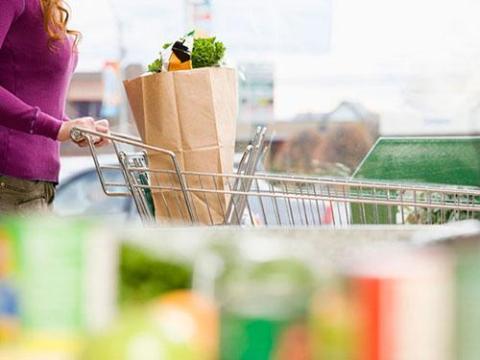How grocers are adapting to shoppers’ omnichannel fluidity

With COVID-19 having forced even reluctant grocers to operationalize e-commerce, it seems that the industry has finally reached an omnichannel tipping point.
Some grocery executives expect e-commerce penetration to more than double for their own organizations in the next three to five years, to an average penetration of nearly 25%.
The two channels complement each other, contrary to a once-held belief that online cannibalizes stores. In theory, omnichannel isn’t complicated: it’s ultimately a matter of systems integration. In practice, however, it can be challenging to pull it off profitably and at scale.
For it all to come together, organizations need to break down silos between e-commerce and store planning teams and rethink category and shelf planning more holistically.
Breaking down the walls
With most grocers forced to pivot to online with curbside or delivery pickup orders at the start of the pandemic, customers frequently didn’t receive complete orders, or if they did, odds were there were plenty of substitutions.
The sudden shift to online and curbside and the initial supply chain strains that reflected widespread COVID-related shutdowns were signs that the walls that typically sat between e-commerce and in-store planning teams had to come down to satisfy shoppers’ expectations.
Planogram automation models must become more dynamic to help grocers plan their inventory based on these newer demand levers. With some consumers pivoting to curbside or delivery on a more permanent basis, when they do go into the store their basket on that trip is likely to look much different.
That’s why customer experience must also evolve. It now needs to cater to both types of shoppers: those whose impression of the store is based on the accuracy of their curbside orders and those who have resumed in-store shopping.
Category planners must ensure that they have the right models in place to support both in-store and online demand with a precise balance of labor and merchandise to maintain both profitability and customer satisfaction.
Adapting is key
Three or four years ago, an online shopper would be ecstatic to get something delivered in 24 hours or less, but the stakes are now higher than ever. Not only do shoppers want the order as fast as possible, but they also want the order to be flawless, whether that’s in terms of fewest substitutions possible or simply in terms of accuracy.
This is an excellent opportunity for previously siloed teams to come together to help their organizations be more dynamic on several fronts that can add margin.
Retailers who were nimble enough quickly incorporated new capabilities, from loyalty program membership-based services to value-add for customers, better e-commerce capabilities and the inception and growth of their own retail media networks (RMNs) to drive traffic to their sites.
Other opportunities include leaning on warehousing capabilities to offer additional products that can be showcased online, but that may not make sense to carry in stores, including shelf-stable specialty items. This way grocers can expand product selection and margin by also leaning on the new opportunities created by omnichannel.
Preparing for higher-than-ever stakes
The blend of physical and digital has no doubt created massive conflicts. Online and physical realms are changing and merging, with analysts and experts agreeing that there will continue to be a sizeable upward swing in online grocery. What won’t change, however, is how quickly and accurately customers will want their orders.
Executing this successfully from a planning perspective has evolved beyond the shelf and turned into a complex challenge around all sides of the store: from curbside to the front of the store to the back room. Having best practices in place to foster quicker execution, greater shopper satisfaction and enhanced profitability will be essential for grocer success.
Rachael Hadaway is senior VP of product, CPG, Symphony RetailAI




